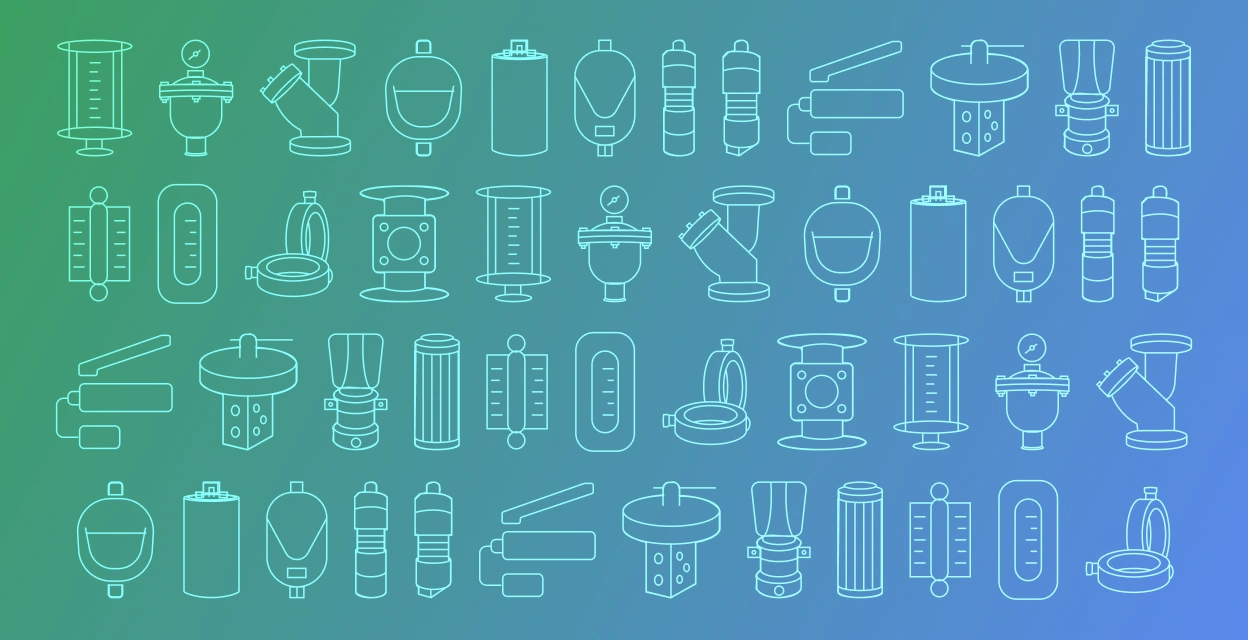Introduction: Controlling the Pulse of Hydraulic & Process Systems
In high-pressure fluid systems, especially those in oil & gas, chemical, and water treatment operations, pulsation is more than a vibration, it's a silent disruptor. Caused by reciprocating pumps and compressors, pulsation can lead to noise, vibration, pressure spikes, inaccurate readings, and even premature system failure.
That’s where pulsation dampeners come in. These unsung heroes absorb pressure surges and stabilize flow, protecting your equipment, improving safety, and extending component life.
In this blog, we break down what pulsation dampeners do, and more importantly, why the quality of your manufacturer matters just as much as the product itself.
What is a pulsation dampener?
A pulsation dampener is a pressure-absorbing device placed on the discharge side of reciprocating pumps to minimize pressure spikes, vibrations, and flow inconsistencies.
What Do Pulsation Dampeners Actually Do?
Pulsation dampeners are often gas-charged (bladder, diaphragm, or piston type) and installed inline to smooth out the erratic flow caused by piston or diaphragm pumps.
They help:
- Eliminate pressure surges
- Reduce noise and vibration
- Protect piping and instrumentation
- Improve accuracy of flow meters and gauges
- Increase overall system lifespan
🗣️ Expert Insight:
“A well-placed pulsation dampener isn’t just a performance booster, it’s a safety buffer that shields everything downstream.”
— Mechanical Systems Weekly - Fluid Handling Insights, 2023
📊 Industry Stat:
According to Hydraulic Institute (2022), systems using properly sized and tuned pulsation dampeners report up to 40% fewer vibration-induced failures in connected instrumentation and piping.
Where Are Pulsation Dampeners Used?
Pulsation dampeners are used across industries where pressure fluctuations can lead to inaccurate dosing, flow interruptions, or mechanical stress.
Common applications:
- Oil & Gas: Chemical injection skids, wellhead control panels
- Chemical Processing: Metering pumps for corrosive liquids
- Water Treatment: RO systems and dosing skids
- Food & Beverage: Precise flow control in hygienic lines
They are especially critical in systems with positive displacement pumps, which generate unsteady, high-energy pulses.
Types of Pulsation Dampeners
The most common types include:
Bladder Dampeners: Gas pre-charge with rubber bladder to absorb pulsation
Diaphragm Dampeners: Elastomeric diaphragm separates fluid and gas chamber
Piston Dampeners: Rugged, used for higher pressures and flow rates
Choosing the right type depends on:
- Pressure range
- Fluid compatibility
- Pump type and pulse frequency
- Temperature and chemical exposure
Why Manufacturer Quality Matters 🏭
Even the best dampener design will fail if not manufactured with precision, quality materials, and compliance.
Key manufacturer considerations:
- ISO 9001:2015 certification and QA processes
- High-grade materials (SS316, Hastelloy, PTFE)
- Pressure and hydro testing
- Gas pre-charge accuracy
- Custom engineering for skid integration
Substandard manufacturing can lead to gas leakage, bladder rupture, or inaccurate pressure response — putting your system at risk.
🗣️ Expert Insight:
“Not all dampeners are equal. If you’re operating in a high-risk zone, manufacturer quality is your only insurance.”
— OilTech Global Insights - Engineering Roundtable, 2022
📊 Industry Stat:
A FlowTech Study (2023) found that pulsation dampeners built to international standards extend system reliability by up to 60% compared to uncertified alternatives.
FAQs
What is the function of a pulsation dampener?
It absorbs and smooths pressure spikes caused by reciprocating pumps to protect downstream equipment and improve flow stability.
How do I choose the right pulsation dampener?
You must consider pump type, pressure range, fluid type, and installation constraints. A trusted manufacturer will guide you through selection.
Can poor-quality dampeners cause damage?
Yes. Leaky, mismatched, or underperforming dampeners can lead to pipe fatigue, seal failure, and inaccurate dosing or metering.
Whether you’re managing fluid transfer on an offshore platform or metering chemicals into a pipeline, choosing the right pulsation dampener and the right manufacturer is critical.
Petronash Engineering Services is your trusted partner for certified, high-performance pulsation dampeners, built for rugged energy sector operations.
From material selection and engineering to pre-charging, testing, and field integration, we deliver dampeners that protect, perform, and last.
📩 Email: [email protected]
🌐 Website: www.petronashengineering.com
Conclusion
Pulsation dampeners are essential components in fluid systems, but not all are made equal.
Investing in quality-built dampeners from a reliable manufacturer ensures:
- Extended equipment lifespan
- Better process control
- Safer and quieter operations
- Reduced unplanned downtime
Petronash combines deep application knowledge, international standards, and robust engineering to provide pulsation dampeners that meet the highest expectations of the energy industry.
When precision and reliability matter — choose Petronash.
 Back To Blogs
Back To Blogs